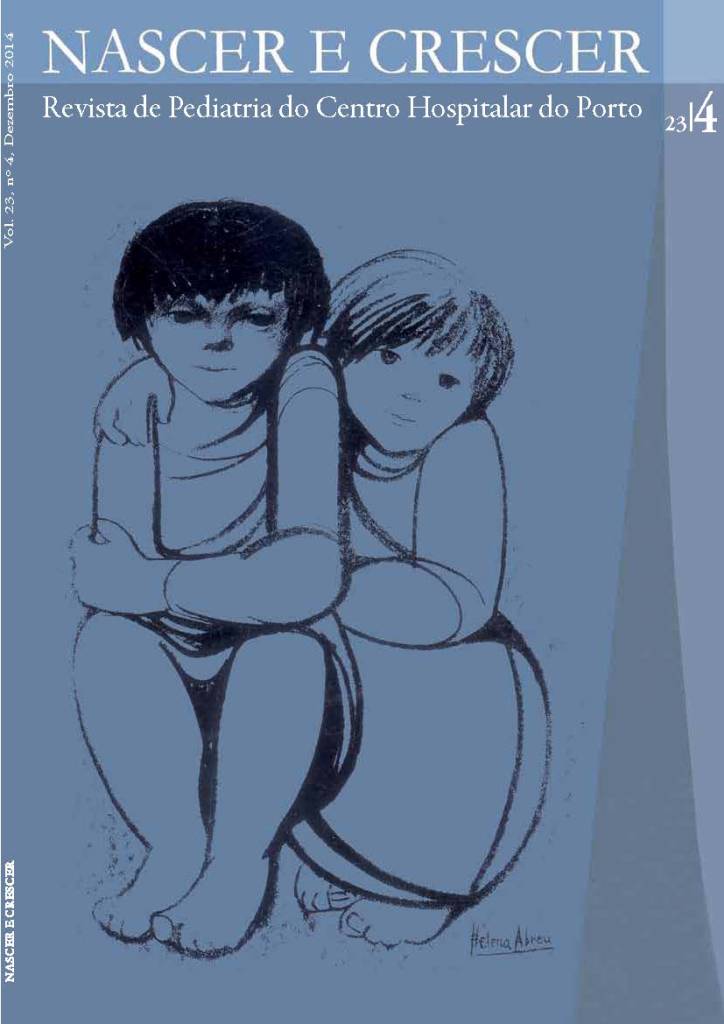Short stature and Shox Gene haploinsufficiency
DOI:
https://doi.org/10.25753/BirthGrowthMJ.v23.i4.8787Keywords:
Short Stature, SHOX gene, Madelung deformity, MesomeliaAbstract
Introduction: SHOX gene (short stature homeobox gene) deficiency is one of the most frequent genetic causes of isolated or familial short stature, with highly variable clinical severity.
Case-report: The authors describe a 14 year-old-girl, with short limbs and short stature. The wrist X-ray showed Madelung deformity. The molecular study showed deletion of the SHOX gene (FISH del (X) (Xp22.3Xp22.3) (SHOX). A very careful physical examination, including measurement of body proportions, is of extreme importance in the clinical evaluation of short stature. The Madelung deformity can only appear in the adolescence. Treatment with growth hormone can improve the final height.
Discussion/Conclusions: The prevalence of short stature due to SHOX gene mutations among children with short stature appears to be similar to that of Growth Hormone deficiency or Turner syndrome. The authors’ intention is to draw attention to this clinical entity, since a timely diagnosis can have therapeutic implications.
Downloads
References
Binder G. Short stature due to SHOX deficiency: genotype, phenotype and therapy. Horm Res Paediatr 2011; 75:81-9.
Leka S, Kitsiou-Tzeli S, Kalpini-Mavrou A, Kanavakis E. Short Stature and dysmorphology associated with defects in the SHOX gene. Hormones 2006; 5:107-18.
Rappold G, Blum W, Shavrikova E, Crowe B, Roeth R, Quigley C, et al. Genotypes and phenotypes in children with short stature: clinical indicators of SHOX haploinsufÞ ciency. J Med Genet 2007; 44:306-13.
Munns C, Haase H, Crowther L, Hayes M, Blaschke R, Rappold G, et al. Expression of SHOX in Human Fetal and Childhood Growth Plate. J Clin Endocrinol Metab 2004; 89:4130-5.
Benito-Sanz S, Barroso E, Heine-Suñer D, Hisado-Oliva A, Romanelli V, Rosell J, et al. Clinical and Molecular Evaluation of SHOX/PAR1 Duplications in Léri-Weill Dyscondrosteosis (LWD) and Idiopathic Short Stature (ISS). J Clin Endocrinol Metab 2011; 96:E404-12.
Rosilio M, Huber-Lequesne C, Sapin H, Carel JC, Blum WF, Cormier-Daire V. Genotypes and phenotypes of children with SHOX deÞ ciency in France. J Clin Endocrinol Metab 2012; 97:E1257-65.
Munns CF, Berry M, Vickers D, Rappold GA, Hyland VJ, Glass IA, et al. Effect of 24 months of recombinant growth hormone on height and body proportions in SHOX haploinsufÞ ciency. J Pediatr Endocrinol Metab 2003; 16:997-1004.
Jorge A, Funari M, Nish M, Mendonça B. Short stature caused by isolated SHOX gene haploinsufÞ ciency: update on the diagnosis and treatment. Pediatr Endocrinol Rev 2010; 8:79-85.
Rappold G, Fukami M, Niesler B, Schiller S, Zumkeller W, Bettendorf M, et al. Deletions of the homeobox gene SHOX (short statue homeobox) are an important cause of growth failure in children with short stature. J Clin Endocrinol Metab 2002; 87:1402-6.
Munns C, Glass I. SHOX-Related Haploinsuficiency disorders. 2005 Dec 12 [Updated 2008 Feb 1]. In: Pagon RA, Adam MP, Bird TD, et al, editors. GeneReviews™[Internet]. Seattle (WA): University of Washington, Seattle; 1993-2014. Disponível em: http://www.ncbi.nlm.nih.gov/books/NBK1215/.
Llano-Rivas I, Fernández-Toral J, Navarro-Vera I. Discondrosteosis de Leri-Weill. Mutación en gen SHOX y expresividad variable. An Pediatr (Barc) 2011; 74:405-8.
Wit J, Dunkel L. Overview: Developments in Idiopathic short stature. Horm Res Paediatr 2011; 76:1-2.
Downloads
Published
How to Cite
Issue
Section
License
Copyright and Authors' Rights
All articles published in Nascer e Crescer - Birth and Growth Medical Journal are Open Access and comply with the requirements of funding agencies or academic institutions. For use by third parties, Nascer e Crescer - Birth and Growth Medical Journal adheres to the terms of the Creative Commons License "Attribution - Non-Commercial Use (CC-BY-NC)".
It is the author's responsibility to obtain permission to reproduce figures, tables, etc. from other publications.
Authors must submit a Conflict of Interest statement and an Authorship Form with the submission of the article. An e-mail will be sent to the corresponding author confirming receipt of the manuscript.
Authors are permitted to make their articles available in repositories at their home institutions, provided that they always indicate where the articles were published and adhere to the terms of the Creative Commons license.


